Accepted Scientific Name: Orbeanthus hardyi (R.A.Dyer) L.C.Leach
Excelsa Taxon. Ser. 1: 74. 1978
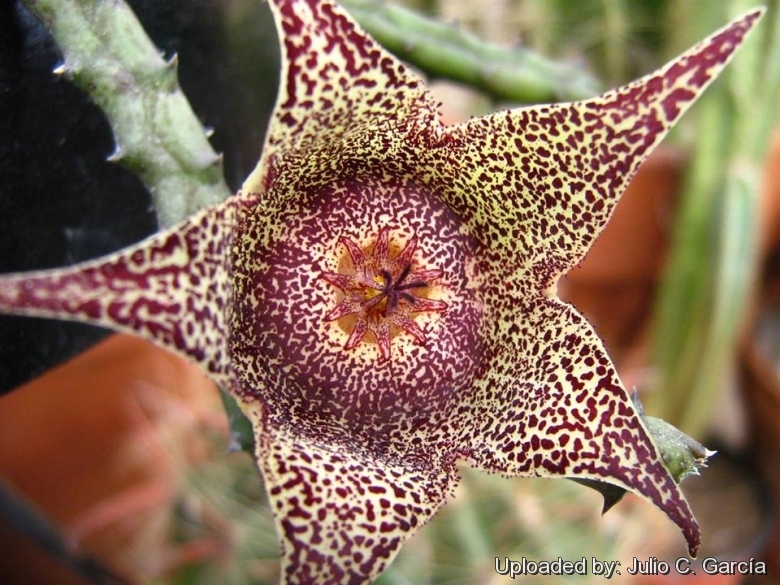
Stultitia hardyi (Orbeanthus hardyi) Photo by: Julio C. García
Origin and Habitat: Bewaarkloof to Abel Erasmus Pass to Blyde River Canyon. Limpopo and Mpumalanga. South Africa. (Extent of occurrence less than 500 km²) It is known from fewer than five subpopulations.
Altitude range: 900 - 1500 metres above sea level.
Habitat and Ecology: Orbeanthus hardyiSN|28306]]SN|28306]] grows in accumulated litter on the floor of dry forest on south-facing slopes, also on cliffs and rocky outcrops, wedged in crevices.
Synonyms:
Common Names include:
RUSSIAN (Русский): Орбеантус Харди
Description: Orbeanthus hardyiSN|30507]]SN|28306]], still often labelled with its old name Stultitia hardyiSN|28305]]SN|28305]], is a low creeping perennial-succulent, making thin trailing speckled stems and beautiful cream-coloured flowers with maroon-red spots. The corolla lobes are free, with very short corolla tube.
Stems: Cylindrical, procumbent, prostrate, running on ground surface, greyish green mottled with purple, in full sun reddish or brownish, up to 30 cm in length, 6-9(-12) mm thick, excluding teeth, young distinctly obtusely 4-angled, sides furrowed, older with a tessellated, uneven surface, tubercles about 1 mm, conical, acute, prominent, spreading or slightly inflexed towards the stem.
Inflorescence: 1-2 flowered, slowly developing. Peduncle 2-5 mm long.
Flowers: Flower buds apically acute, abruptly broadening above the middle Sepals 1.5 - 3 mm long. Corolla star shaped, very shallowly campanulate, about 7 cm across, with a wide bowl-shaped centre, creamy white, darker inside and irregularly mottled with maroon. Annulus 1.8-2 cm across, paler, tube margin and annulus outside, maroon, tube 5-6 mm, bowl-shaped, cushion-shaped, interstaminal corona bowl shaped, at the base cream-coloured, blotched with brown-carmine. Anthers yellowish. Pollinia about 0.5 mm. Flowers smell like a dead rotting animal which baked in the sun and are very attractive to the flies that pollinate them. Sometimes flies lay eggs on the flower.
Blooming season: Summer-autumn.
Fruit: Typical twin seed horns (follicles), narrowly fusiform, acute and often don't appear until a year later.
Seeds: With pappi.
Related species: Orbeanthus hardyiSN|28306]]SN|28306]] is most closely related to Orbeanthus conjunctusSN|28306]]SN|30507]].
Bibliography: Major refrerences and further lectures
1) L. C. Leach “Excelsa” Taxon. Ser. 4: 134-136 1988
2) Focke Albers, Ulrich Meve “Illustrated Handbook of Succulent Plants: Asclepiadaceae: Asclepiadaceae” Volume 4 Springer, 2002
3) Doreen Court “Succulent Flora of Southern Africa” CRC Press, 01/Jun/2000
4) James Cullen, Sabina G. Knees, H. Suzanne Cubey “The European Garden Flora Flowering Plants: A Manual for the Identification of Plants Cultivated in Europe, Both Out-of-Doors and Under Glass” Cambridge University Press, 11/Aug/2011
5) Werner Rauh “The Wonderful World of Succulents: Cultivation and Description of Selected Succulent Plants Other Than Cacti” Smithsonian Institution Press, 1984
6) Bruyns, P.V. “Stapeliads of southern Africa and Madagascar.” (Vol. 1, pp. 1-330). Umdaus Press, Pretoria. 2005
7) Eggli, U., “Sukkulenten” Verlag Eugen Ulmer, Stuttgart, 1994
8) David Hardy, Anita Fabian, Gerrit Germishuizen “Succulents of the Transvaal” Southern Book Publishers, 1992
9) Gerrit Germishuizen “Transvaal Wild Flowers” Macmillan South Africa (Publishers), 1982
10) Hilton-Taylor, C. "Red data list of southern African plants." Strelitzia 4. South African National Botanical Institute, Pretoria. 1996
11) Leach, L.C.. “A contribution towards a new classification of Stapelieae (Asclepiadaceae) with a preliminary review of Orbea Haw., and descriptions of three new genera.” In: Excelsa Taxonomic Series 1, The Aloe, Cactus and Succulent Society, Rhodesia. 1978
12) Victor, J.E. Orbea hardyi (R.A.Dyer) Bruyns. National Assessment: Red List of South African Plants version 2014.1. Accessed on 2014/08/05 2005.
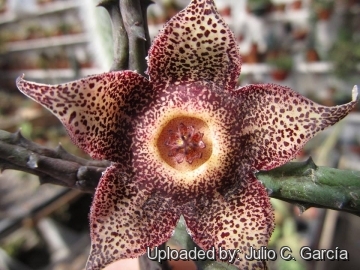 Stultitia hardyi (Orbeanthus hardyi) Photo by: Julio C. García
Stultitia hardyi (Orbeanthus hardyi) Photo by: Julio C. García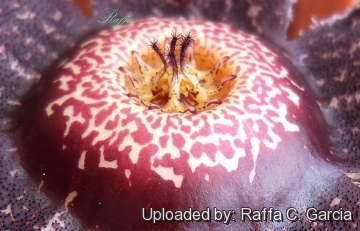 Stultitia hardyi (Orbeanthus hardyi) Photo by: Raffa C. Garcia
Stultitia hardyi (Orbeanthus hardyi) Photo by: Raffa C. Garcia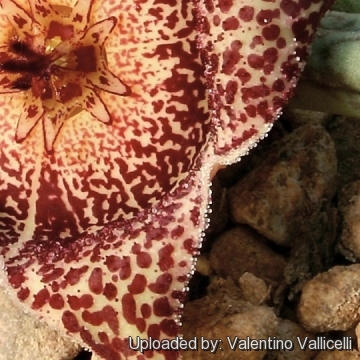 Stultitia hardyi (Orbeanthus hardyi) Photo by: Valentino Vallicelli
Stultitia hardyi (Orbeanthus hardyi) Photo by: Valentino Vallicelli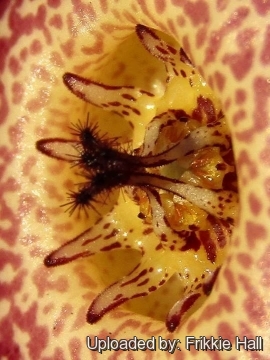 Stultitia hardyi (Orbeanthus hardyi) Photo by: Frikkie Hall
Stultitia hardyi (Orbeanthus hardyi) Photo by: Frikkie Hall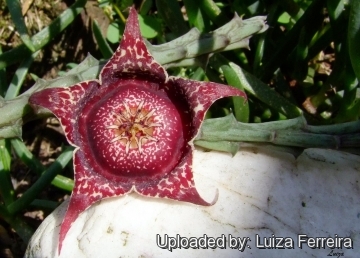 PVB 7520 (Orbeanthus hardyi) Photo by: Luiza Ferreira
PVB 7520 (Orbeanthus hardyi) Photo by: Luiza Ferreira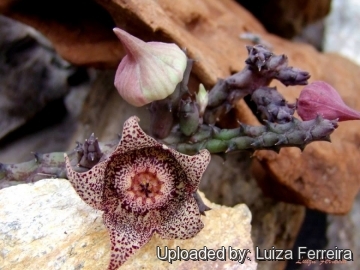 Stultitia hardyi (Orbeanthus hardyi) Photo by: Luiza Ferreira
Stultitia hardyi (Orbeanthus hardyi) Photo by: Luiza Ferreira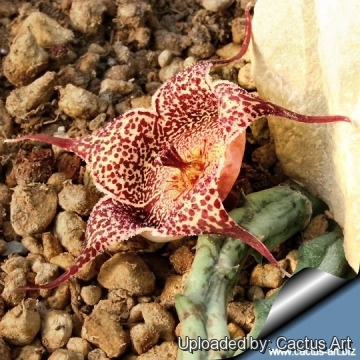 Stultitia hardyi (Orbeanthus hardyi) Photo by: Cactus Art
Stultitia hardyi (Orbeanthus hardyi) Photo by: Cactus Art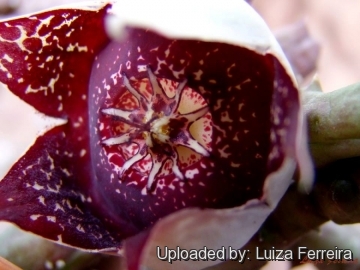 Stultitia hardyi (Orbeanthus hardyi) Photo by: Luiza Ferreira
Stultitia hardyi (Orbeanthus hardyi) Photo by: Luiza FerreiraCultivation and Propagation: Orbeanthus hardyiSN|28306]]SN|28306]] is a very unusual, seldom offered, xerophytic plant adapted to dry soils and not difficult as commonly supposed only bearing in mind that this species benefits from slightly warmer winter than others. It is very suitable for a hanging pot.
Growth rate: It is a somewhat difficult and slow growing Stapeliad that will make large clumps given the best conditions. Most plants will offset readily, and clumps can be produced in a few years.
Soils: It likes very porous mineral cactus mix soil, pH 7,5 to 8,5 (mildly alkaline), but can become too elongated if compost is too rich.
Repotting: This plant needs plenty of space for its roots, repotting should be done every other year or when the it has outgrown its pot. Use pot with good drainage.
Watering: It needs regular watering, especially during the hottest summer days; provide also some light watering if the green house temperatures in winter are elevated. Either excessive or very scarce watering can induce rot.
Fertilization: Feed with a high potassium fertilizer in summer.
Frost Tolerance: For safe cultivation winter temperatures must be kept over 10° C, but it can withstand winter night-time temperatures down to about 5°(or less) Celsius for short period. Freezing temperatures are often fatal. In the rest period no high atmospheric humidity!!
Sun Exposure: Best for half-shade but grow well in full sun and full shade too. Tends to bronze in strong light, which encourages flowering, but is likely to suffer from sun scorch or stunted growth if over exposed to direct sunlight during the hottest part of the day in summer.
Diseases: This species is relatively resistant to cryptogamic diseases than others and is quite resistant to the “Balck spot” disease of Asclepiads. Rot it is only a minor problem with Orbeanthus hardyiSN|28306]]SN|28306]] if the plants are watered and “aired” correctly. If they are not, fungicides won't help all that much.
Uses: It is an excellent plant for container growing. Cascading, clustering, great for a hanging display. Stems may possibly become purple and limp in winter, but revitalize in early spring. It always looks good and stays small. It look fine in a cold greenhouse and frame or outdoor in a rockery.
Propagation: Seeds and cuttings. Cuttings will root only in hot weather. Cuttings must be kept very dry to root. Seeds germinate readily if they are sown when fresh.
Your Photos
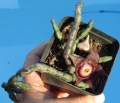
by Frikkie Hall

by Valentino Vallicelli

by Luiza Ferreira






















